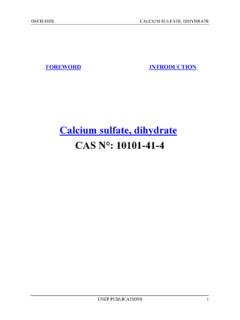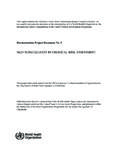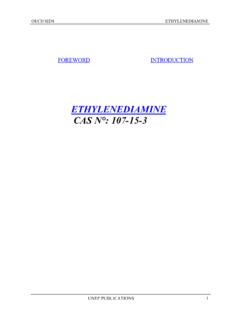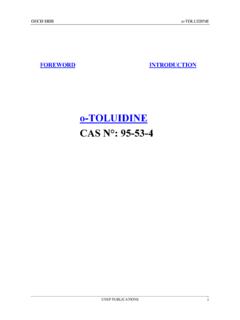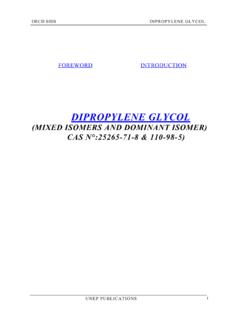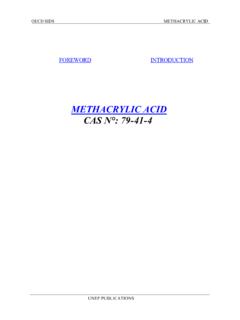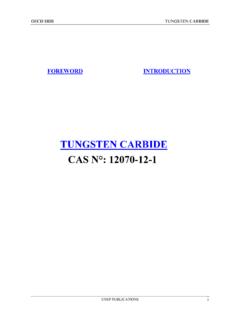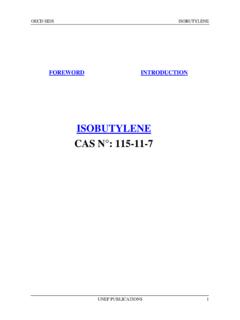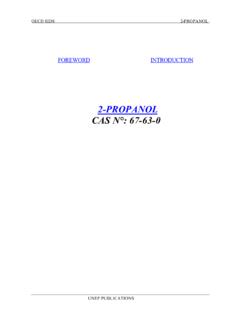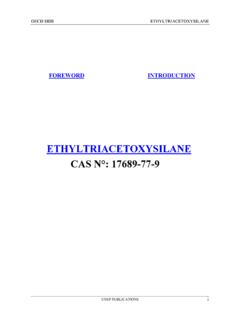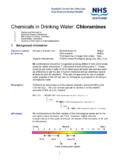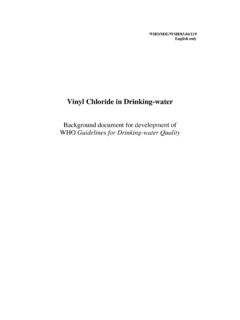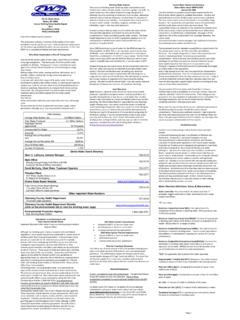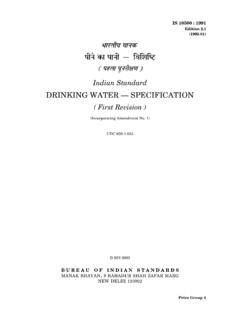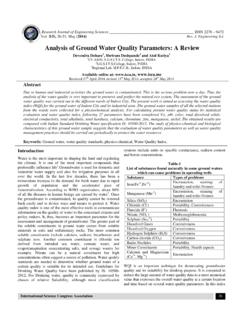Transcription of POTASSIUM CHLORIDE CAS N°: 7447-40-7 - IPCS …
1 OECD SIDS POTASSIUM CHLORIDEUNEP PUBLICATIONS1 FOREWORDINTRODUCTIONPOTASSIUM CHLORIDECAS N : 7447-40-7 OECD SIDS POTASSIUM CHLORIDEUNEP PUBLICATIONS2 SIDS Initial Assessment Reportfor13thSIAM(Bern, 6-9 November 2001)Chemical Name: POTASSIUM chlorideCAS No: 7447-40-7 Sponsor Country:NorwayNational SIDS Contact Point in Sponsor Country: Marit KopangenHISTORY:SIDS Dossier, SIAR and SIAP are reviewed by the National Institute of Public Health (Norway) and the Norwegian Institute for Water Research (Norway)(August 2001).
2 All original studies reported in the SIDS dossier were submittedfor peer review. TESTING:no testing ( X )testing( )COMMENTS:Deadline for circulation: 14 September 2001 Date of Circulation: 14 September 2001 OECD SIDS POTASSIUM CHLORIDEUNEP PUBLICATIONS3 SIDS INITIAL ASSESSMENT PROFILECAS Name POTASSIUM chlorideStructural FormulaK-ClRECOMMENDATIONSThe chemical is currently of low priority for further CONCLUSIONS OF THE SIARH uman HealthPotassium CHLORIDE is an essential constituent of the body for intracellular osmotic pressure and buffering, cellpermeability, acid-base balance.
3 Muscle contraction and nerve oral toxicity of KCl in mammals is low (LD50 = 3020 mg/kg bw). In humans, acute oral toxicity is rarebecause large single doses induce nausea and vomiting, and because KCl is rapidly excreted in the absence of any pre -existing kidney damage. Usualtherapeutic doses of POTASSIUM for oral solution-adults are g/day toprevent depletion, and g/day for replacement. For repeated dose toxicity, a NOAEL at 1820 mg/kg bw/day in rats, and a NOAEL > 80 mmol KCl/day (approx.)
4 85 mg/kg bw/day) in humans can be retained. A thresholdconcentration for skin irritancy of 60 % was seen when KCl in aqueous solution was in contact with skin of human volunteers. The threshold concentration when applied to broken skin was 5 %.No gene mutations were reported in bacterial tests, with and without metabolic activation. However, highconcentrations of KCl showed positive results in a range of genotoxic screening assays using mammalian cells inculture.
5 The action of KCl in culture seems to be an indirect effect associated with an increased osmotic pressureand concentration. Therefore KCl, do not have any direct relevance in the intact body were such concentrations cannot occur. Further studies using in vivo systems are not considered necessary under SIDS. No evidence of treatment -related carcinogenicity was observed in rats administered up to 1820 mg KCl/kg bodyweight/day through the food in a 2 year developmental study revealed no foetotoxic or teratogenic effects of KCl in doses up to 235 mg/kg/day (mice) and 310 mg/kg/day (rats).
6 No fertility study has been located. Based on the extensive amount of knowledge onKCl intake, regulation and effects in the human body, and on a worst case exposure estimate (see Exposure), nofurther testing of fertility is considered required under -intestinal irritant effects in humans caused by KCl administrated orally have been reported at doses fromabout 31 mg/kg bw/day. One epidemiological investigation among potash miners disclosed no evidence ofpredisposition of underground miners to any of the diseases evaluated, including lung as inorganic salt is not subjected to further degradation processes in the environment.
7 In water, potassiumchloride is highly water soluble, and readily undergoes dissociation. In soil, transport/leaching of POTASSIUM andchloride is affected by the clay minerals (type and content), pH, and organic matter. In short-term acute toxicity tests with fish, daphnia and algae the following results were found (lowest test result values):Ictalurus punctulus48h-LC50= 720 mg/l; Daphnia magna: 48h-LC50 = 177 mg/l;Nitzschia linearis: 120 h-EC50 = 1337 mg/l.
8 A chronic reproductive test with the invertebrate Daphnia magna gave a LOEC of 101 mg/l. All the studies compiled on the acute and chronic aquatic toxicity were > 100 mg/L. Thus it is concluded that KCl is not hazardous to freshwater into considerations the background concentrations of KCl inOECD SIDS POTASSIUM CHLORIDEUNEP PUBLICATIONS4seawater (380 mg/l K+ and 19,000 mg/l Cl-), it is concluded that there is no reason for further investigations of KCl on marine species.
9 The low concern for the environment is supported by the absence of a bioaccumulation potential for the plants, POTASSIUM is one of the thr ee major nutrients and CHLORIDE is an essential micronutrient. The POTASSIUM requirement for optimal plant growth is in the range 2-5 % of the plant dry weight of vegetative parts. In most plant species the Cl requirement for optimal growth is in the range of mg/g dry matter. POTASSIUM in plants is important for the osmotic and ionic regulation, plays a key role in the water homeostasis, and is closely connected with processes involved in the protein synthesis.
10 In higher plants, POTASSIUM affectsphotosynthesis at various levels. Cl is also essential for the photosynthesis in plants, and has important functions in the osmotic regulation. An adequate supply of POTASSIUM and CHLORIDE in plants tends to improve the plant sresistance towards seve ral diseases. ExposureWorld -wide production figures for KCl exceed 1 million metric tons/year. Virtually all commercial KCl is extractedfrom natural sources of the substance.
